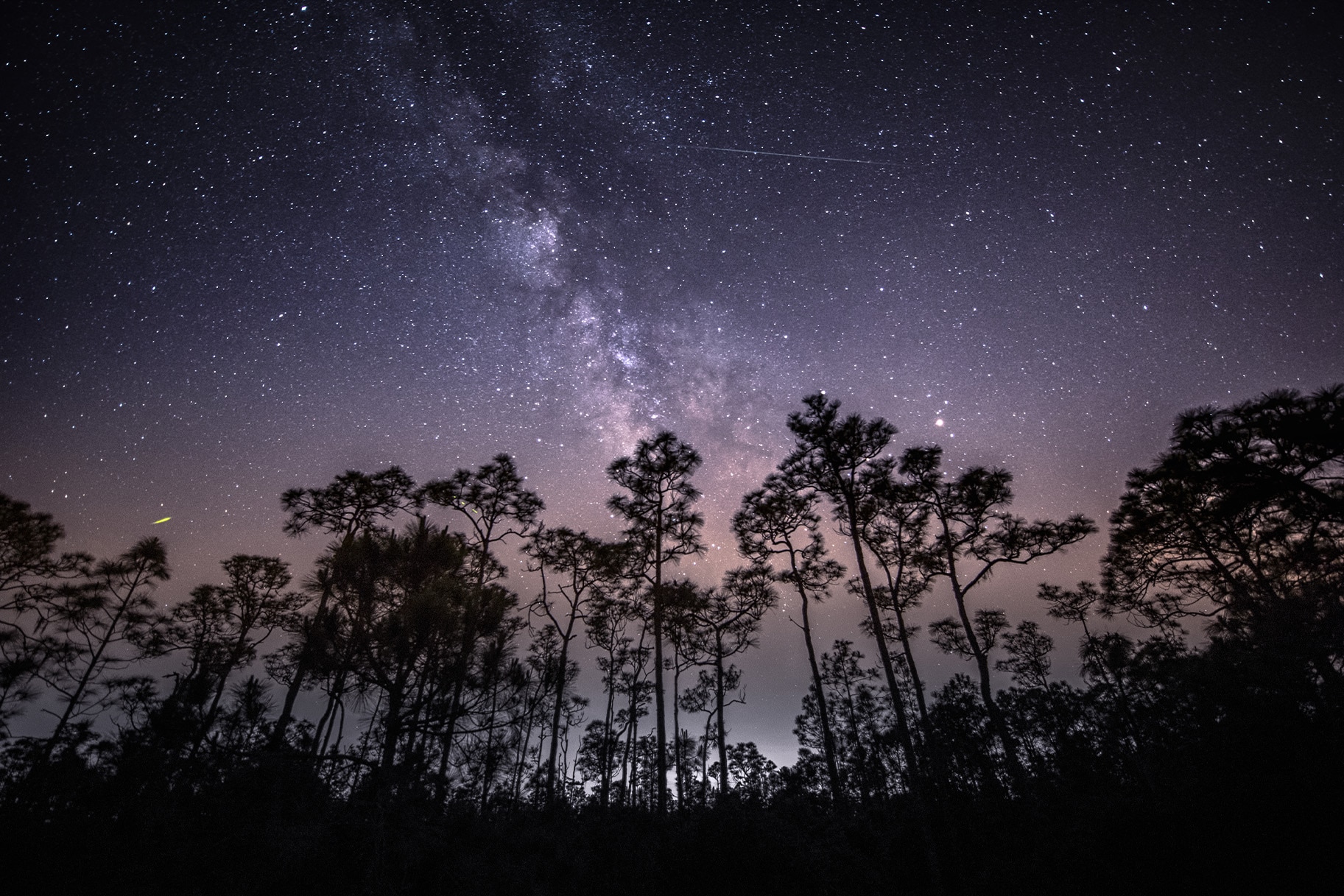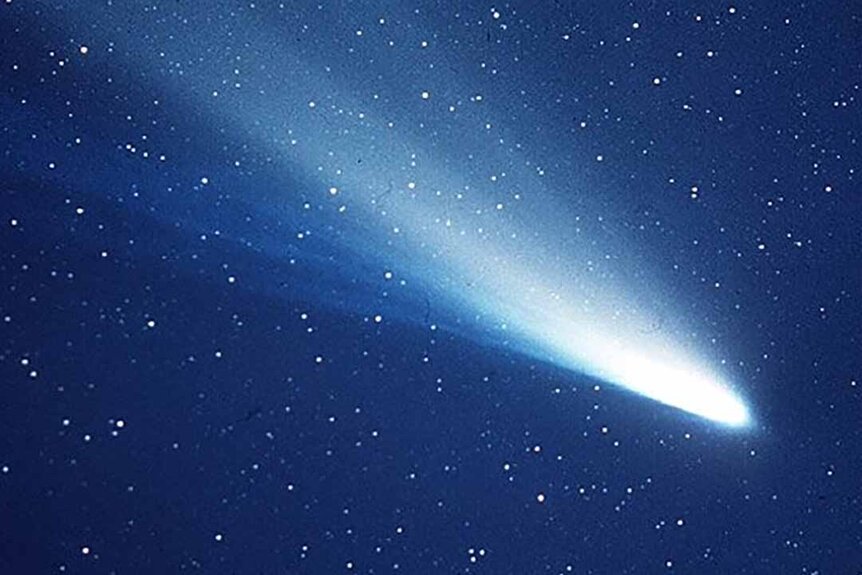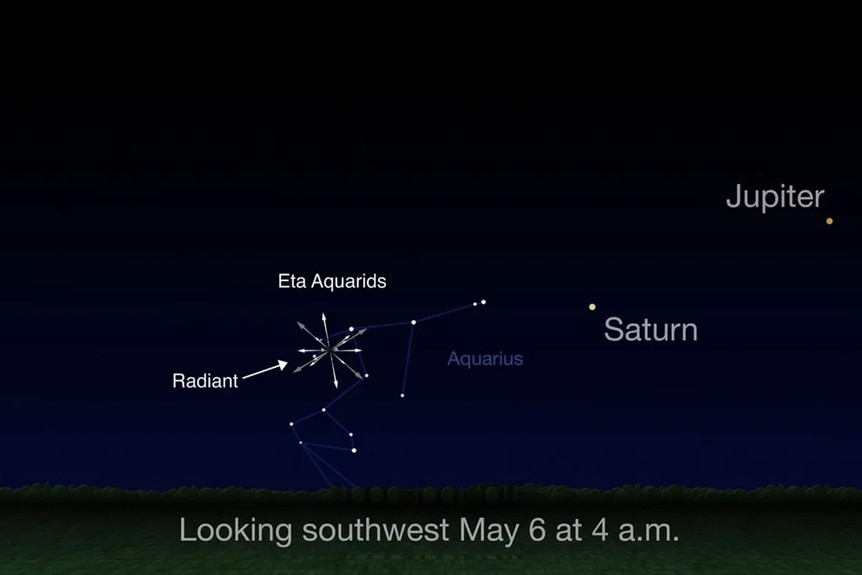Create a free profile to get unlimited access to exclusive videos, sweepstakes, and more!
How to Catch the Eta Aquarids Meteor Shower, Leftover Debris from Halley's Comet
Fragments of Halley's Comet burn up in the atmosphere, creating the Eta Aquarids meteor shower.

The 2021 disaster movie Asteroid (streaming now on Peacock) is just one of many cinematic stories about space rocks slamming into the Earth. Basically, from the moment we learned an asteroid did in the dinosaurs, we’ve been wondering what it might be like if one of its compatriots swung by to give us the same treatment.
The fortunate truth is that there aren’t any killer asteroids headed our way in the foreseeable future. Some of them might get close (astronomically speaking) and some will even pass through Earth’s orbital path. They’ll miss us each time, but some of those asteroids and comets leave trails behind them like cosmic breadcrumbs, and those breadcrumbs do strike the Earth, generating brilliant meteor showers.
For More on Asteroids, Comets, and Meteors:
NASA Prepares to Visit a Golden Asteroid Worth Up to $700 Quintillion
Apophis Probably Isn't Coming to Earth in 2029, But What If It Gets Nudged by Another Asteroid?
The Asteroid Bennu Is a Time Capsule from the Early Solar System
The Eta Aquarids Meteor Shower Is Cosmic Debris from Halley’s Comet
If you’re looking for an opportunity to wish upon a star, you’ll have your chance the first weekend of May 2024 when the Earth passes through the trail left by Halley’s Comet. Halley appears in the sky every 75 years or so, giving skywatchers approximately one opportunity to see it in their lifetime. The last time Halley visited it was 1986, and it won’t show up again until 2061.
People have noted its occasional passing since at least 240 BC, but in 1705, astronomer Edmond Halley was the first to realize that each of those sightings were of the same object. He predicted it would return again in 1758. The comet was named for Halley when that prediction came true, decades after his death.
Halley’s Comet may have originated in the Oort cloud, a vast sphere of smally planetary bodies made of ice and rock. Something must have bumped it toward the inner system where it settled into its current route around the Sun. Unlike the planets, which circle the Sun in mostly circular paths, the orbit of Halley is highly elliptical. At its farthest point, it's roughly the same distance as Pluto. At its nearest, Halley gets closer to the Sun than Venus.
When Halley comes into the inner solar system it crosses through the Earth’s orbit at two points, once on its way in and once on its way out. While Halley only visits the inner solar system once every 75 years or so, the Earth passes through its trail of meteoric bread crumbs every year in May and October. Later this year, that second interaction will generate the year’s Orionid meteor shower, but first it’s time for the Eta Aquarids.
How to See the Eta Aquarids Meteor Shower
The 2024 Eta Aquarids meteor shower will occur the first week of May, peaking the evening of May 4 - 5, 2024. That’s when the Earth will be passing through the thickest part of the stream left behind by Halley’s Comet. During the peak, you can expect to see up to 30 meteors per hour from an ideal viewing site. The best places to observe the Eta Aquarids are in southern latitudes, owing to the angle they come in at. Viewers in the Northern Hemisphere are likely to get something closer to 10 meteors per hour during the peak.
Because of the shower’s orientation, meteors sometimes create what are known as “earthgrazers,” long streaks of light which trail low along the horizon. Meteors come in hot and fast, at speeds of nearly 150,000 miles per hour, and they carry so much energy into the atmosphere that they sometimes leave glowing trails in the air as they burn up.
If you’re going out this weekend, the best viewing window will be during the pre-dawn hours of May 5, and you’ll want to look relatively low in the sky, toward the constellation Aquarius. Meteors will appear to radiate from the star Eta Aquari, which is where the shower gets its name. The Moon will be in its waning crescent phase, moving toward the New Moon, providing relatively low moonlight levels and decent viewing conditions. Still, you’ll want to get away from the city if you can, find an area of dark skies, lay down in the grass, and look up. Give yourself about 30 minutes for your eyes to adjust to the dark and wait for the show to begin.
In the meantime, catch Asteroid streaming now on Peacock.




























